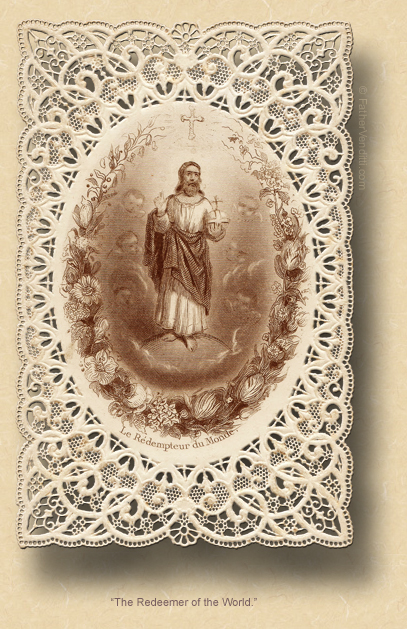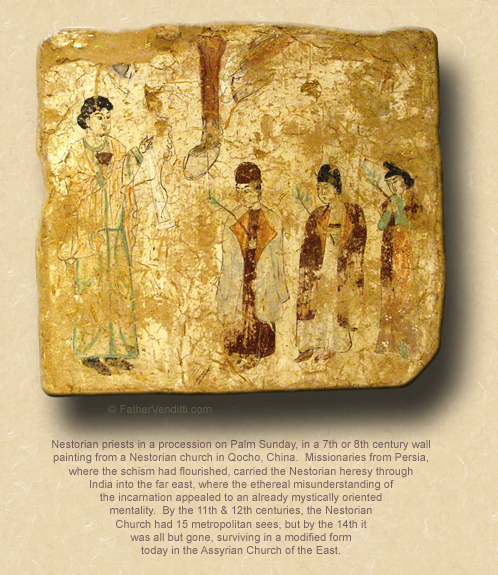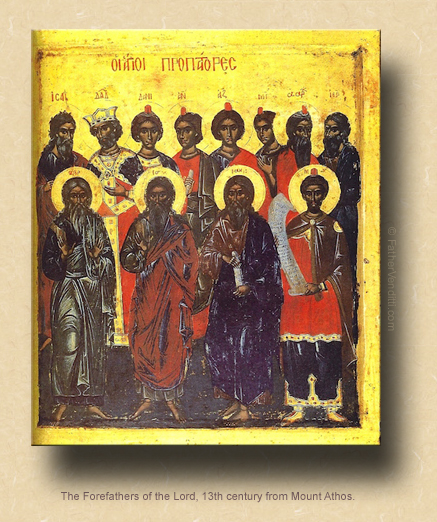Star Wars Theology and the Scandal of the Incarnation.
The First Day of the Greater Antiphons.*
Lessons from the feria, according to the ordinary form of the Roman Rite:
• Genesis 49: 2, 8-10.
• Psalm 72: 1-4, 7-8, 17.
• Matthew 1: 1-17.
Lessons from the dominica,** according to the extraordinary form of the Roman Rite:
• Philippians 4: 4-7.
• Psalm 79: 2-3, 2.
• John 1: 19-28.
FatherVenditti.com
|
 9:58 AM 12/17/2018 — Today begins what I had referred to at the beginning of this holy season as “second Advent,” more properly called the days of the Greater Antiphons because of the proper antiphons sung at Vespers proper to each day by date, which are also used as the verse before the Gospel at Holy Mass. Here, the focus of the Church's liturgy changes from one of preparation for our final judgment and our Lord's second coming to one of anticipation and preparation for celebrating His first coming as the Holy Babe of Bethlehem. And for the priest or deacon assigned to read the Holy Gospel at Mass, this first day of the Greater Antiphons, December 17th, is always dreaded because of the prospect of having to read all those peculiar Old Testament names which no one can pronounce, the Gospel lesson for today being the entire first half of the first chapter of Matthew’s Gospel; and, it’s very tempting to question whether the reading of the human genealogy of our Lord is necessary. What can hearing this list of names offer us that has any spiritual import? The answer to that question is both personal and historical. 9:58 AM 12/17/2018 — Today begins what I had referred to at the beginning of this holy season as “second Advent,” more properly called the days of the Greater Antiphons because of the proper antiphons sung at Vespers proper to each day by date, which are also used as the verse before the Gospel at Holy Mass. Here, the focus of the Church's liturgy changes from one of preparation for our final judgment and our Lord's second coming to one of anticipation and preparation for celebrating His first coming as the Holy Babe of Bethlehem. And for the priest or deacon assigned to read the Holy Gospel at Mass, this first day of the Greater Antiphons, December 17th, is always dreaded because of the prospect of having to read all those peculiar Old Testament names which no one can pronounce, the Gospel lesson for today being the entire first half of the first chapter of Matthew’s Gospel; and, it’s very tempting to question whether the reading of the human genealogy of our Lord is necessary. What can hearing this list of names offer us that has any spiritual import? The answer to that question is both personal and historical.
As early as the fourth century, in their attempt to try and understand the mystery of the Incarnation, some Christians began to doubt the reality of it. Nestorius, the Patriarch of Constantinople from 428 to 431, came to believe in a complete separation between the human and the divine in Jesus, and his heresy caused a serious schism in the Church which lasted, in one form or another, until the 14th century. It is not an esoteric question. If our Lord Jesus Christ was not a real man, if he was merely a projection of God into this world from another, then we are not truly saved. Look at it this way:
In the Star Wars movies, you'll remember that whenever Darth Vader wanted to talk to the Emperor, he would use this communication device, and the Emperor's image would appear in 3-D like a hologram, but the Emperor wasn't really there; it was just a projection. That's exactly what the Nestorians believed Jesus was: God didn't really come to earth in the flesh; He was just a projection of God in the appearance of man, beamed onto this earth, if you will, by some kind of divine 3-D projector.
Now, just to be fair, like most heretics, the Nestorians came up with this not out of malice, but out of their love for God: they so venerated God's Divinity that they considered the idea of a real incarnation an insult to God; they came up with a way to explain it away in order to protect the idea that God cannot be diminished in any way.  But the implications of this are devastating: if Jesus wasn't a real man, then His suffering wasn't real, He didn't really die so there was no reason for Him to actually rise, which means, of course, that the penalty for the Original Sin is not paid and we are not saved. The crux of the problem for the Nestorians was the scandal of the notion that God could die, something they reasoned could not happen; therefore, Jesus could not have been fully man; he might have been “human” in some sort of ethereal, poetic way, but He couldn't have been a real flesh and blood man like the rest of us. But the implications of this are devastating: if Jesus wasn't a real man, then His suffering wasn't real, He didn't really die so there was no reason for Him to actually rise, which means, of course, that the penalty for the Original Sin is not paid and we are not saved. The crux of the problem for the Nestorians was the scandal of the notion that God could die, something they reasoned could not happen; therefore, Jesus could not have been fully man; he might have been “human” in some sort of ethereal, poetic way, but He couldn't have been a real flesh and blood man like the rest of us.
Like most of the early heresies, Nestorianism was fueled by an extreme and enthusiastic love for God without fully thinking it through, and that thinking through took centuries. A century earlier, Arius, whom we've mentioned before, tackled the same problem from the opposite extreme, declaring not that Jesus wasn't a real man, but that He wasn't really God. In both cases, the passion, death and resurrection of our Lord becomes nothing but a puppet show: there's no real suffering or death, no real resurrection, so no one is actually redeemed.
When finally the issue was settled, at least officially, the Church resolved that no such free thinking should be allowed to infect the Church again, which is how we got the Creed, and why we are all required, each and every Sunday, to declare publicly that Jesus Christ is “consubstantial with the Father; through Him all things were made. For us men and for our salvation He came down from heaven, and by the Holy Spirit was incarnate of the Virgin Mary, and became Man." Not a symbol of a man, not a projection of a man, not merely in the form of a man, but a real flesh and blood Man: a Man with two natures, fully human and fully divine, existing in the same single Person; a Man Who suffered and died to pay the debt of Original Sin, and Who, by His own divine power, rose from the dead and redeemed His fellow men.
Thus endeth the history lesson. Not to suggest that any of us are tempted to lapse into Nestorianism;—or Arianism, for that matter—but, the fore-thinking Evangelist Matthew understood the danger of not understanding the true nature of our Blessed Lord correctly, which is why he began his Gospel the way he did. That being said, Saint Matthew's ponderous genealogy of our Lord does have a prescient significance for each of us. At the beginning of Advent I had mentioned how important the saints of the Old Testament, particularly the prophets, would be to the observance of this season. For the Fathers of the Church, the Old Testament was an allegory of the New; and, today this list of our Lord's human ancestors brings it home in rather graphic detail. Matthew mentions them because he’s writing his Gospel to a primarily Hebrew audience and wanted to show his fellow Jews that Jesus was, in fact, the Messiah predicted in the Old Testament for the which the Hebrew people had been waiting. We read these names today for a different reason.
Break out your Old Testament and look up some of these names, and you’ll find that the human ancestors of our Lord were not all righteous and holy. Among these names are sinners: those who committed incest, adultery, murder, apostasy; the names of Judas, of Tamar, of David and Ruth are filled with intrigue and calumny and horrific acts of despotism. Just take the one name of King David, who had a man named Uriah, a soldier of some distinction, sent to the front lines of a battle unprotected with the intention that he would be killed, because David lusted after this man’s wife. These were the human ancestors of our Lord. This is what so scandalized Nestorius. What he didn't understand was that our Lord wanted men such as these as His human ancestors; that is the mystery of the Incarnation: He wanted, on the human level, to be linked with all the muck and mud of man. He wanted to clear a way for Himself through the sins and crimes of humanity.  After all, that was the reason He came to earth as a man, to take upon His own back the sins of mankind, and it is the history of each one of us that our Blessed Lord takes upon Himself and overcomes; for, each one of us has some of the features of our Lord’s less than sterling ancestors. In each one of us, either dormant or active, can be found the sins of the patriarchs and their children. Think back to our discussion of Original Sin on the feast of the Immaculate Conception: there are never any new sins committed, only old sins with new faces. And just as Jesus once took upon Himself the flesh of a Man and came into this imperfect world in order to heal and save it, so He also comes into our flesh—in the Blessed Eucharist—to heal and save us. After all, that was the reason He came to earth as a man, to take upon His own back the sins of mankind, and it is the history of each one of us that our Blessed Lord takes upon Himself and overcomes; for, each one of us has some of the features of our Lord’s less than sterling ancestors. In each one of us, either dormant or active, can be found the sins of the patriarchs and their children. Think back to our discussion of Original Sin on the feast of the Immaculate Conception: there are never any new sins committed, only old sins with new faces. And just as Jesus once took upon Himself the flesh of a Man and came into this imperfect world in order to heal and save it, so He also comes into our flesh—in the Blessed Eucharist—to heal and save us.
The danger, of course, is that we make the same mistake that our Lord’s own people made in failing to recognize that He is, indeed, who He claims to be. Saint Matthew, no doubt, thought that, by beginning his Gospel with our Lord’s human genealogy, everyone would be convinced: that Jesus fulfills everything that the prophets of the Old Testament required of the promised Messiah. He was wrong. They weren’t convinced. The question is: are we? Do we recognize that the Eucharist we celebrate and receive is our Lord, God and Savior, Jesus Christ? Do we realize that our own happiness, both in this world and the next, depends upon following Jesus Christ as perfectly as we can? Are we put off the idea of trying to follow Jesus perfectly with the excuse that we’re not holy? Many of our Lord’s own human ancestors were not holy; that was the whole point. As our Lord Himself said to the Pharisees who criticized his association with sinners, “…those who are well have no need of a physician…” (Mark 2: 17 RSV).

* The Greater Antiphons sung at Vespers, known as the "O Antiphons," and also serving as the verse before the Gospel in the ordinary form, are ordered and utilized differently between the two forms of the Roman Rite. The banners at the top of the pages for the Days of the Greater Antiphons have been created to reflect the original ordering of the antiphons as used in the extraordinary form. For reference, the usages of the two forms compare thus:
| Date: |
Extraordinary Form: |
Ordinary Form: |
| Dec. 17. |
O Sapientia. |
O Sapientia. |
| Dec. 18. |
O Adonai. |
O Adonai. |
| Dec. 19. |
O Radix Iesse. |
O Radix Iesse. |
| Dec. 20. |
O Clavis David. |
O Clavis David. |
| Dec. 21. |
O Oriens. |
O Emmanuel. |
| Dec. 22. |
O Rex Gentium. |
O Rex Gentium. |
| Dec. 23. |
O Emmanuel. |
O Rex Gentium. |
| Dec. 24. |
[The Vigil of Christmas.] |
O Oriens. |
Regarding December 24th: in the Roman Rite, the concept of a vigil differs completely between the ordinary and extraordinary forms. In the ordinary form, a vigil is simply a celebration of the feast the evening before, either prior to or following First Vespers (in the United States, after 4:00 PM). On Solemnities on which an obligation has been attached, this may be fulfilled at either the Mass of the vigil the evening before, or on the feast itself.
In the extraordinary form, the word “vigil” designates the entire day before a First Class Feast, and the Mass for the vigil takes place in the morning. If a feast carries an obligation, this must be satisfied on the feast itself; the extraordinary form does not offer the opportunity to satisfy an obligation on the evening before.
In the extraordinary form, December 24th is the Vigil Day of Christmas and has its own proper texts, the Days of the Greater Antiphons having concluded on the 23rd. In the ordinary form, the morning of December 24th is a day of the Greater Antiphons up to Vespers, at which point it becomes the vigil for Christmas.
** In the extraordinary form, the days of the Greater Antiphons do not have specific lessons assigned to them as they do in the ordinary form, with the lessons taken from the previous Sunday as usual; the exception will be when a Day of the Greater Antiphons occurs on an Ember Day, which do have lessons assigned to them.
|

